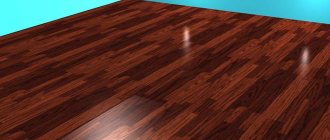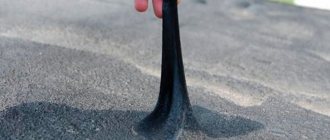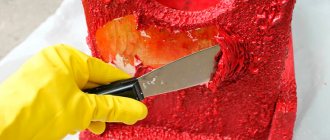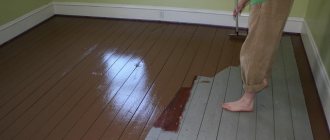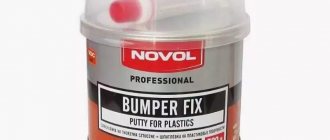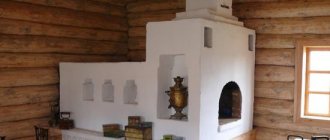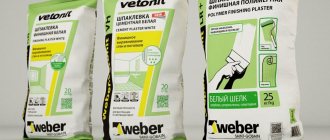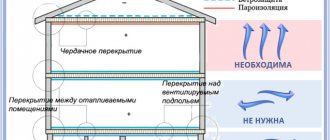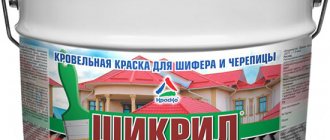The dignified design of resting places has become clear evidence of the special attitude of a developed society towards its dead. Nowadays, relatives certainly place on the grave:
- stele or monument;
- flower garden;
- fence
A well-maintained burial demonstrates the desire of people to leave a memory for generations about a person who has passed on to another world. And a reliable fence made of natural stone is a necessary addition to the generally accepted design of graves.
What should paint resist?
Black Painted Fence The fence is exposed to snow, wind and rain. In summer, the coating peels off from ultraviolet radiation, and in winter and autumn from humidity. How to choose paint for a cemetery fence?
When purchasing you need to consider:
- Waterproof.
- Application technique. The material should be smooth and not require special experience or special tools.
- Appearance. Of course, paint should decorate the fence and not spoil it.
- Wear resistance.
- Interaction with metal. If the material does not adhere well, there is a risk of peeling.
- Resistant to sunlight. Ultraviolet light often causes changes in color and texture.
Cleaning the foundation from moss and dirt
Overgrown mosses very quickly fill the area and give the burial an unkempt appearance. Mosses that have found their way into a flower garden intensively absorb nutrients from the soil, depleting and drying it out. Mosses are perennials and reproduce by dividing spores. When moss first appears on the ground, it should be sprinkled with sand.
Dirt, and along with it moss, can be removed from the concrete base using:
- garden or mounting knife;
- spatula;
- choppers;
- metal brush.
There are many methods and folk recipes for removing moss from an area. But burial is a special place. Therefore, you need to choose a radical remedy for him that allows you to quickly and without wasting time correct the situation.
A series of non-toxic but effective “MOS-STOP” products are produced specifically for cleaning monuments, gravestones and tombstones from moss and microscopic algae. Application is very simple. It is enough to spray all the places where moss grows once - and that’s it! You don't have to worry for several years. But if humidity levels are consistently high and the area is shaded, additional treatment may be needed.
The MOX-STOP series includes products for cleaning stone and concrete, monuments, wooden fences, and roofing materials.
Share the article on social networks
Preparation and painting
Since painting needs to be done outside your home, you will need to have everything you need for the job with you. If the previous layer of paint on the fence has become unusable, it must be removed. The fence is cleaned thoroughly until the metal is shiny.
The performer of this work should have a wire brush, a spatula, coarse sandpaper and a file on hand.
You will have to work hard here, but the result will be positive. After cleaning, the surface of the material is treated with an anti-corrosion compound, and after drying it is also treated with an antiseptic.
How to paint a cemetery fence? The more complex the design and the more complex the patterns on it, the less brushes you will need to paint. The surface is completely covered, without gaps. If you want to paint the fence in different colors, then first apply black, and after it dries, individual fragments are painted in a different color. When performing such work, it is necessary to remember those to whom memory and respect are tributed, mentally communicating with your loved one whose fence has been put in order.
How to paint a grave fence (2 videos)
Beautiful fences in the cemetery (27 photos)
Necessary tools and protective equipment
First, the materials are prepared: a primer, a degreasing agent, as well as paint for the fence in the cemetery; which one to choose is decided taking into account the properties of the coating and one’s own preferences, as well as the problems that the composition will solve. To paint a metal structure you will need:
- metal brush for cleaning the surface;
- sandpaper polishes metal and eliminates defects;
- brushes of different sizes;
- sponge to improve the appearance of the fence; it is used when choosing certain painting techniques;
- spray gun - suitable when you need to create a uniform coating without smudges (on large elements);
- containers for paint;
- roller - used for painting large parts of the fence.
In addition, when painting the fence you need to wear gloves, a protective mask or a respirator. You should prepare unnecessary clothes for this, and always closed ones.
Dark colors for fencing
The most common fence color is black. But the soil can be of other shades:
- red;
- yellow;
- white;
- black;
- grey.
It is better to choose materials from the middle price segment. This does not guarantee success, but it will make the choice easier.
Other types of paints:
- Colored soil. Reliably protects the fence from corrosion and masks unevenness.
- Hammer paint. The nitro-based material is distinguished by its texture, which appears after drying.
- Enamel PF. A paint and varnish material consisting of highly dispersed pigments and varnishes. It covers the metal with a thin film, reliably preventing rust.
- Polymer coating. Contains polystyrene, solvent
When choosing a material, drying time must be taken into account.
Painting forged and welded fences
For painting ritual metal structures (fences, crosses, flower beds, benches and tables), you can order several types of coatings from us - from inexpensive primer or Dali enamel to durable Hammerite hammer paint and durable Pulverit powder paint.
There are more than 80 colors to choose from:
black, white, gray, red-brown, brown, red copper, gold, silver, bronze, cherry, pink, green bronze, blue, blue, white silver, cappuccino, etc.
We also provide sandblasting work at an affordable price to clean and restore old ritual metal structures from any type of contamination - rust, scale and old paint.
All work is carried out in our production. Our craftsmen can treat the cleaned surface of metal structures with any type of coating: primer, enamel, paint, powder coating and patina.
Metal structures for restoration, repair and painting are dismantled, delivered to our workshop and, after the work has been completed, returned back and installed in their original place. ➜ View the cost of work
Price list for all types of coatings (primer, enamel, paint, powder, patina)
Alkyd enamel primer "Dali"
(kiln drying)
white, black, green, brown, red-brown, gray
Gloss paint "Hammerite"
(kiln drying)
white, black, light brown, magnolia, red, leaf, light gray, blue, green, dark blue, brick red, gray, brown, golden, silver, yellow
Hammer paint "Hammerite"
(kiln drying)
black, copper, golden, blue, gray, brown, silver-gray, red, light green, dark blue, dark green.
Smooth semi-matte paint "Hammerite"
(kiln drying)
Powder coating "Pulverit"
(canvas) one side
According to RAL scale
Powder coating "Pulverit"
(lattice products) two sides
Powder coating for Pulverit varnish
(canvas) one side
Powder coating for Pulverit varnish
(lattice products) two sides
Our blacksmith shop produces ritual forged fences from high-quality metal, hardened at high temperatures. Our specialists will paint the fences in any color of your choice - manually and using modern technologies. We offer: primer, enamel, rust paint, powder coating and patina.
We will manufacture and install all types of forged products on a turnkey basis WITHOUT INTERMEDIARIES with a quality guarantee!
We provide the lowest possible prices for ritual fencing! Turnkey master installation. Any design to order. Free measurement.
Delivery to any cemetery in Moscow and the Moscow region: Mozhaisk, Istra, Pushkino, White Pillars. We work seven days a week from 9:00 to 20:00. Order!
Accepting orders and consultation by phone - from 09 to 21 o'clock. Seven days a week! Online consultation
Telephone:
List of requirements for modern paint
Decide what paint to paint a metal fence in a cemetery
, it is necessary to take into account its vulnerability to various influences and in the future be guided by the established requirements for paint, here are the main ones:
- resistance to fluctuations in air temperature, immunity to wind;
- inertness under the influence of ultraviolet radiation;
- provide reliable protection of the metal from the effects of precipitation and wet soil using a waterproof film;
- lack of reaction to chemical exposure;
- resistance to biological environment.
In the description, select a paint with the following characteristics:
- The purpose of the solution is to work with metal.
- Recommended for external use.
- Technical characteristics of the coating: resistance, durability, inertness to atmospheric influences, hydrophobicity.
- Decorative features: enamel, matte or glossy varnish.
The most popular paints for fencing are acrylic, oil and alkyd, and drying oil is used as a solvent. Each option has its pros and cons, but in recent years alkyd paints have taken the lead. When planning to paint the fence yourself, do not forget about a special face mask, as the paints are toxic.
Methods for painting a cross in a cemetery
The first thing you need to do before painting the cross is to remove any irregularities from the product and make the surface smooth. A very good way to protect the surface of the cross is to coat it with a special varnish for working with products located outdoors.
The advantages of this type of painting are as follows:
- the varnish not only covers the surface of the product, but also penetrates into the depth of the material;
- the structure of the varnish allows the wood to breathe;
- the varnish resists various impacts and cannot be erased from the product;
- the smell of varnish repels wood pests.
After varnishing, the wood acquires a yellowish tint. The varnish does not dry immediately, but after some time.
How to paint a wooden cross on a grave?
Painting the cross with high quality paint is the next option for protecting the grave cross from harmful influences. Water-based or oil-based paint will protect the wood from dampness, sunlight, and harmful insects. Plus, you can choose the paint color that you like.
Impregnating the cross with stain will prevent wood pests from damaging it, since this coating has antimicrobial properties. It not only penetrates deeply into the structure of the wood, but also forms a protective film on the surface. Coating the cross with wax will give the surface a pleasant matte tint, protect it from bark beetles, moisture, and sunlight, but does not resist mechanical damage well.
Paint for a fence in a cemetery - which one to choose
What is the best way to paint a metal fence in a cemetery? It is better to give preference to non-toxic enamels with anti-corrosion properties.
Universal
Universal dyes contain a primer. They can also be applied to any material: wood, metal or plastic.
Universal materials are divided into two categories:
- Safe for indoor use, non-toxic.
- Those that cannot be used indoors.
Dyes also differ in composition:
- Oil. They are not suitable for painting a cemetery fence because they do not like temperature changes and quickly lose color.
- Acrylic. Bright and durable, they can be used without worry.
- Eraser. They consist of polyacrylic resins. This makes the material resistant to moisture, but unsuitable for indoor use.
- Epoxy resin. They protect the metal from low and high temperatures, so they are useful for hot and sunny regions.
Powder type of dye
This is a pigmented disperse system, evenly distributed over the entire surface. Most often the substance contains:
- oligomers;
- auxiliary components;
- plasticizers;
- substances that accelerate hardening.
Unlike liquid analogues, these dyes have a number of properties:
- smoothness;
- apparent density.
To apply the varnish you will need a spray gun.
Alkyd and oil paints
Alkyd enamels are superior in quality to oil enamels. They form a dense texture on the metal surface that prevents moisture and dirt from entering. Alkyd dyes have other advantages:
- Dries quickly.
- No shrinkage or cracks even after several years of use.
But there are also disadvantages:
- Possible fading after a few years. Oil-based dyes need to be renewed regularly as they are exposed to ultraviolet rays.
- If the surface is poorly cleaned, the material begins to peel off after a couple of months.
Most often, PF-133 and PF-115 enamel is used for painting metal.
Forge paint - stylish and durable
The composition contains a large number of anti-corrosion fillers: powder, fine glass. A distinctive property of blacksmith's paint is its ability to transform rust into a chemically neutral coating. As a result, the anti-corrosion properties of the paint are improved.
It is enough to apply blacksmith's polish to the hedge once. There is no need to update it, as the service life of the coating can reach 20 years. Some compositions require preliminary priming. In this case, it is necessary to purchase soil of the same brand as the paint.
Hammer paint - expensive and reliable
Hammer paint has the following properties:
- After application, it retains color for a long time and does not fade.
- Repels dirt and water.
- Has anti-corrosion properties.
- Does not contain toxins harmful to humans.
- Dries quickly after application.
- Create a pattern on the surface that resembles shallow holes.
The disadvantages of hammer enamel include the high cost and the need to remove the old coating before application.
Silicone paint
Silicone paint is not as harsh as forge or hammer paint, but is more versatile. It is a water-based dye containing silicone resins. Water is used as a solvent.
Acrylic paints
Acrylic paints are made on a water-dispersion basis with the addition of polyacrylates. If the surface is properly prepared before applying paint, the material will last more than a month. However, you will still have to update it every few years.
Polymer coating
Polymer coating cannot be done alone, since painting requires a special heat chamber. Therefore, most often such materials are used in factories for the construction of structures.
Grave fencing by type of design
According to the type of execution, all grave fences are divided into forged, welded, cast, consisting of chains on poles and mesh. In fact, the difference between them lies in the method of manufacturing the fence, the method of connecting its main elements. The more complex the manufacturing option is, the more expensive it will cost the customer. However, inexpensive grave fences are not necessarily of poor quality. Rather, they are more universal.
Forged
For forged grave fences, high-quality hardened iron is used. The components are wide, strong rods. They are usually treated with an anti-corrosion coating.
Forging is performed by professional blacksmiths; making such a product yourself will be very difficult, even with the appropriate tools.
Welded fences for the grave
Welded fences for graves are made by welding different metal parts. The process is carried out using gas or electric welding. Either metal rods or thin profile pipes are welded. The welding process is not particularly difficult.
Cast
Cast fences are also made from high-strength metal, but according to a template. In terms of production complexity, they occupy an intermediate place between forged and welded. Their strength approaches that of forged products, but this type suffers from design limitations. The manufacturing principle is associated with patterned one-piece casting.
Grave fences made of chains on poles
Grave fences made of chains on poles are made, of course, from chains. They are suspended between posts previously driven into the ground. Chains can be plastic, metal or a combination. Plastic ones are cheaper than metal ones, can withstand strong temperature changes, and will last a long time. Metal ones are more expensive, but their service life is longer. They tolerate extreme weather conditions well.
The pillars can be made of stone or concrete. They are mounted in the ground, with chains suspended between them. In this case, metal ones will look very harmonious.
Mesh
Mesh fences are made of metal mesh. First, the pillars are driven in, between which the mesh is subsequently stretched. It can serve as a support for climbing plants - hedges. The mesh can also be galvanized - more durable. However, it is worth remembering that metal fencing rods made of soft mesh can be short-lived and impractical, although they are the cheapest type of fencing.
To choose the right type of posts needed for the fence, it is best to consult with specialists in the store. In addition, they will definitely tell you about the advantages of each type.
Selection of color and decorative effect
Choosing a color is not a problem at the moment. Paints from almost any company have the largest selection of shades. The painting can be glossy, semi-matte or matte. Even if you want to create your own unique tone, you can use the computer color selection service, which is available in stores in this direction.
You can buy paint with a decorative effect. For example, coatings that create the effect of deformation or the effect of an aged surface are very popular.
For high-quality and durable painting of a metal fence, use the following tips:
- do not prime the metal with a roller, as it presses air and moisture deep into the soil, which leads to rapid rusting;
- painting a metal fence must be done at air temperatures from +5 to + 40 ° C, humidity 80-85%;
- do not dilute the paint with a large amount of solvent, as in this case it will settle in a thin transparent layer;
- Spray painting produces a brighter, more uniform surface than roller or brush painting.
To mark the boundaries of a burial site, it is customary to install a fence around the burial site. Apart from this reason, a fence is also necessary to prevent animals from entering the grave, and a plaque is attached to it with details of the deceased and memorial attributes.
In a cemetery you can see a fence of almost any shape and color, made from various materials. Loved ones of the deceased mostly choose metal fences, since products made from natural stone are more expensive and not so popular. With proper care and regular paint replacement, metal looks aesthetically pleasing and lasts a long time.
Having decided to install a metal fence, the next question arises: what paint to buy for a fence in a cemetery? Everyone wants the chosen paint to be of high quality and perform best in changing weather conditions, but with the variety of store options, it is quite difficult for a beginner to navigate working with metal. Most often you can see in the cemetery: blue, white, green, gold, black or copper fences. But the emphasis should still be placed not on color, but on the protective properties of the paint, which ensure that the metal is not susceptible to corrosion and other harmful influences of the external environment.
Paints for concrete surfaces
Paints for exterior concrete work provide protection from various atmospheric precipitations. You can choose a façade, it has suitable parameters. Silicone-based emulsion has high frost resistance.
Based on the type of dissolution of paints and varnishes, paints are divided into:
- Compositions, the diluent of which is water, based on synthetic resins. They paint concrete at air temperatures above 0 °C.
- Compositions diluted with white spirit, xylene, solvent. They can be used at any temperature and high humidity.
Mainly in demand are silicate, acrylic, oil-based, water-based and rubber coatings. It is necessary to choose paints that prevent the development of fungi and mold.
Execution of work
Before painting the cemetery fence, you need to do the following.
- The surface of the finished metal product must be cleaned of rust, dust and dirt. After cleaning it should become polished (to a shine). Be careful not to miss any places, especially when it comes to joining structural elements (so-called hard-to-reach places).
- The joints are also cleaned and leveled. The entire structure is tested for strength and reliability of connections.
- To improve the protective properties of the coloring solution, as well as to make painting easier, it is recommended to treat the fence with a metal antiseptic and prime it. The primer will increase the adhesive properties of materials, reduce paint consumption and ensure more uniform painting.
- After the primer has dried, the structure can be painted.
Please note that most of the work is completed before the structure is delivered and installed at the cemetery. The last stage, namely painting the metal, should preferably be done after installing the fence. After all, during installation there is a possibility of damage to the finish coating.
Preparatory stage
First of all, you should prepare the surface of the fence for painting:
- Thoroughly clean the product from dirt, dust, traces of rust and polish it until shiny. Particular attention should be paid to the places of adhesions - they are difficult to reach.
- Along the way, you should check the structure for stability and reliability; it may require additional fastening.
- Next, the surface should be treated with an anti-corrosion mixture, an antiseptic and primed. The products used must be intended for metal.
- After the primer has completely dried, the product can be painted.
To apply the color mixtures, you can use a regular small brush, although the size may depend on the complexity of the decorative elements on the fence.
What paint to paint a cemetery fence so that it lasts a long time
When we bury our family and friends, we protect their graves with a special fence. Therefore, a metal fence cannot be considered an unnecessary pile of iron. It is advisable to keep it clean and tidy. And if you consider that fences are always on the street.
Constantly exposed to the negative influence of time. Heavy rains, strong winds, snow and scorching sun destroy only metal, and therefore our love. But we don't want that.
How much does it cost to paint the fence at the Mitinskoye cemetery? In today's article you will learn how to paint a fence in a cemetery.
How to paint a metal, iron fence
But how to choose paint and when to start such work. There are many similar questions, but we will consider everything in order.
Choosing a time for painting
The best time to paint a fence is in the summer. The weather at this time of year is hot, dry, and painted fences dry quickly. But not all paints last long in adverse weather conditions.
The cemetery is constantly exposed to strong winds. To prevent your work from going down the drain after the first rain, you should carefully consider the choice of paint composition.
When purchasing, they look not only at the price, but also at the anti-corrosion characteristics.
Choosing a good paint will reduce the risk of rust. Also look at how quickly the material dries. The faster it dries, the better. When purchasing paint, proceed to the fence preparation stage.
The fence is pre-cleaned of dust, dirt and old layers. We recommend choosing a paint product. If you follow the tips, the tomb will look aesthetically pleasing.
Painting stages
We have already decided the question of what paint to paint the fence at the cemetery. It's time to get down to business. Most people choose oil painting. But it is worth noting that it is also not without its drawbacks.
First of all, before you have yet dipped your brush into a jar of this composition, you should apply a layer of protective primer to the fence.
Primer colors:
- red;
- yellow;
- white;
- grey.
The best solution would be to choose white.
Some types of paint do not match the color of the primer. Therefore, pay attention to the material from which the fence is made.
Dark colors for fencing
Black color is appropriate in a cemetery. There may also be different paint for a fence in a cemetery, because everyone has their own personal opinion.
Before you begin water-based work, prepare the fence.
This procedure includes the following steps:
- remove a layer of old paint;
- degrease the fence;
- triggered;
- let the fence dry in the sun.
Try to choose quality paint. Make sure it's secure.
This is also a good option for using polish with a hammer.
A fence coated with a layer of this composition has a number of advantages:
- enamel does not fade in the sun;
- the primary layer of soil is not applied;
- duration for three seasons of service;
- By choosing what color to paint, you can create a decorative design;
- the fence does not require degreasing;
- This enamel dries quickly.
Now you know which paint is best to choose.
Additional types of paint
Painting a fence at a cemetery is a responsible task. You must pay tribute to your family with your soul. When deciding what is best to paint, pay attention to the properties of the coloring compounds.
It is best to paint the cemetery fence with reliable and quick-drying paint. Some manufacturers immediately add soil to its composition. But not all materials will be effective. It's better to choose it in advance. PF is perfect for this.
But he is not popular due to his characteristics, only over the years people have developed a certain stereotype about him. Since PF takes a long time to dry, it is better to carry out all work in sunny weather.
Final stage
Don't forget to take all the necessary painting tools with you from home. You will need a knife or putty knife to remove the old coat and a brush for degreasing, priming and painting.
The metal is mirror polished and polished. Sandpaper will help with this.
It wouldn't hurt to take a file. Some containers have a metal screw in their design. What is the best way to paint a metal fence in a cemetery? You can paint it to match the color of the main fence or a different color.
“Question-answer” section
The coolest paint for a grave fence?
Expert opinion
Klochkov Andrey
Employee of the improvement department of the municipal unitary enterprise "Clean City"
The most durable, bright, water and ultraviolet resistant paint is blacksmith paint. Its cost is several thousand rubles for 1 jar, but the result is worth it, the buyer will only benefit. After painting, you can get a coating that will be almost impossible to damage and will have an unlimited service life.
What paint is best to paint a cemetery fence?
Expert opinion
Klochkov Andrey
Employee of the improvement department of the municipal unitary enterprise "Clean City"
If you have the opportunity to purchase expensive materials, you should choose between blacksmith paint; you can apply it yourself. This is the coolest option. But consumers more often prefer PF enamel; it has become widespread due to its reasonable price and good characteristics: it is resistant to moisture, but the composition must be applied to a prepared surface.
Painted fence at a cemetery
What color are the cemetery fences painted?
Expert opinion
Klochkov Andrey
Employee of the improvement department of the municipal unitary enterprise "Clean City"
The most preferable is a dark tone (black, dark gray). These are the colors that can be found in the churchyard. They symbolize mourning and the depth of grief of the relatives of the deceased. But fences come in other colors: blue, brown, dark green. Bright and light options are usually not chosen, but still some relatives use white paint for the fence. This option is suitable if the monument is made in the same color, for example, made of marble.
Paint selection
To decide which paint to choose, you need to know the types and quality characteristics of coloring compounds. The best of them will be a reliable, quick-drying and durable paint composition. These dyes include the following:
- primer, which is also used for painting fences;
- PF paint;
- hammer paint;
- polymer coating;
- blacksmith paint.
Let's start from the ground. Modern manufacturers add a paint composition to the primer, since this is not an independent type of coating. But such a blend is not always successful. Therefore, it is recommended to use a primer at the preparatory stage, and not as an independent dye. When choosing it, you need to carefully study the composition.
For this type of work, one of the most popular is the “Optimist” primer:
- For indoor and outdoor use.
- Consumption: 100-250 ml/m².
- Complete drying: 2 hours.
PF paint is the most common for this purpose. But it owes its popularity not to quality, people just have a stereotype of drawing with this particular material. Before painting, the metal surface must be degreased and primed.
Since PF takes a long time to dry, fences can only be painted in warm, dry weather.
A medium-cost option is PF-115 enamel from Skladno.
- Designed for painting primed metals, wood and other surfaces exposed to weathering, as well as interior painting.
- Moisture resistant enamel
- resistant to temperature changes from - 50 C to + 60 C.
Good hammer paint, as it has a number of advantages. It does not lose its original appearance over time, is not affected by moisture, looks good and serves as a reliable coating for a long time. And if you take into account the drying speed, then using this type of paint and varnish material for painting metal products is quite profitable.
One of the most popular options is “Prestige” paint:
- For outdoor and indoor use
- Surface: metal, wood
- Drying time: 1 hour
- Consumption: 0.09-0.11 l/m²
- Shelf life: 24 months from the date of manufacture
- Application temperature: from +5 to +35 ºС
- Transportation conditions: Frost resistance (up to -40 ºС)
- Shelf life: up to 8 years depending on color and application conditions
The best option when choosing a coloring material is a polymer coating. But it is impossible to do this in a cemetery. The coloring process takes place in special thermal chambers, and the cemetery does not have such complex equipment. Therefore, fences are painted in this way at the stage of their manufacture and are delivered to the installation site already painted. But such a coating, taking into account the operating conditions of the material, is the most durable.
The polymer, penetrating deep into the metal, forms a single whole with it. This coating is not affected by environmental conditions and does not require additional painting.
Blacksmith paints are optimized for outdoor use. Therefore, if you paint the grave fence with this material, you won’t have to renew it for many years. This paint can be applied to the cemetery yourself. This coating is not afraid of bad weather conditions and does not lose its characteristic shine. This type of dye is expensive, but the high quality justifies the high costs.
Like the previous version, this paint is popular from:
- Base oil
- Brilliant
- For metal
On video: how to paint a metal fence.
Types of fences
Many people decide to install a fence at the funeral stage - along with a wooden cross. However, it is advisable to do this later - after 1 year. Then a monument is placed on the grave. But in any case, the relatives of the deceased are faced with the need to choose a material for making a fence. Available and most common options:
- wooden fence: attractive, easy to install, but susceptible to moisture, however, the use of materials from certain species (beech, oak, larch, pine) allows you to increase the service life of the product; only such fences require the use of paints and varnishes, since this additionally protects wood from moisture;
- stone: it has significant weight, so it cannot be installed on the ground without a foundation, but has an unlimited service life, is resistant to mechanical loads, precipitation, is made of granite or marble, the second option requires maintenance, while the first is characterized by hardness and does not need in cleaning;
- plastic: lightweight design, can be installed without a reinforced foundation and independently, however, it is inferior to other types of fencing in terms of external characteristics, but the price is often no less, in addition, a plastic fence in a cemetery will not last long, because it is characterized by low resistance to mechanical loads , such material will quickly fail;
- metal: a durable fence that perfectly withstands the effects of water, wind-blown debris, large hail, and other negative factors, but metal rusts in a humid environment, which means that in the ground the base will quickly lose its appearance and functionality, and the ground part of the fence is also exposed to water , rusts.
Painting a metal fence
Alkyd and oil paints
In oil paints, the binder is linseed oil based on natural oils. This type of coating can withstand heating up to 80 ° C. At higher temperatures it is destroyed. Oil-painted metal surfaces quickly fade, crack and rust. Therefore, it should not be used when painting a metal fence.
Alkyd paints and enamels are suitable for galvanized metal. They have a high degree of adhesion, but do not tolerate high temperatures and ignite quickly.
How big is your choice?
There are a great variety of coloring products on sale, for every taste and budget. However, when choosing, you should be guided by the technical characteristics of the composition, since the paint must be suitable for working with the material from which the fence is made, and have protective and decorative properties. What paint to paint a metal fence - let's look at the options.
Forge paint - stylish and durable
A universal material that forms a coating of increased reliability on structures made of any metals, including non-ferrous and their alloys, cast iron, steel, galvanized iron. A fence painted with blacksmith paint will last for more than ten years without showing signs of damage. The surface will be resistant to mechanical stress, high humidity, ultraviolet radiation and sudden temperature changes. Blacksmith paints have a number of advantages:
- the material is easy to work with;
- one layer of applied composition dries within an hour (this is very fast!);
- paint masks minor surface imperfections;
- the composition adheres perfectly to the base;
- the coating turns out to be decorative.
By the way, it’s worth talking about decorativeness in more detail. When using blacksmith paints, you can get several effects to choose from:
- painting “gold, silver, bronze, copper or platinum”,
- painting the surface “antique”, and even such options as antique silver with greenery, accents in the form of highlights and other artistic techniques are possible.
Thus, an ordinary fence made of metal rods or an old cast-iron structure is transformed into an elegant and stylish work of art with a few strokes of the owner’s hand!
When choosing blacksmith paint for finishing a fence, you should purchase a primer and a solvent of the same brand along with it, so that the material does not lose its valuable qualities: strength, characteristic shine and reliable adhesion to the surface. When using cheaper or randomly selected compounds, there is a high probability of being disappointed with the result.
The material must be applied after preparing the surface:
- cleaning from dirt or flaking old coating,
- degreasing with a solvent,
- priming.
You can work with a paint brush, roller, or use a paint sprayer.
The cost of forge paint, compared to other materials, is quite high, but the quality of the coating justifies the money spent. If your budget allows, then you don’t have to look for a better option.
Hammer paint - expensive and reliable
Another win-win option for painting any metal fence. Particularly relevant for surfaces that are susceptible to rust or already affected by corrosion. Coating with hammer paint will provide reliable and durable protection for a forged fence, a fence made of corrugated sheets or cast iron:
- there will be no trace left on the surface even from strong blows with a heavy object;
- the paint will not crack under the influence of high summer temperatures or winter frosts;
- the color will not fade for a long time;
- atmospheric phenomena in the form of precipitation are also not dangerous for hammer paint.
By painting a product with this material, you can not only significantly extend its service life, but also improve its appearance. The coating will resemble artistic forging, marks from a blow with a hammer. This effect makes it possible to hide surface imperfections as much as possible and smooth out unevenness.
It is noteworthy that hammer paints have pronounced anti-corrosion properties, which allows them to be used directly over rust. The active substances in the material stop the destructive process and strengthen the structure of the metal, protecting it from the harmful effects of moisture for at least 10–15 years. Manufacturers provide a guarantee of 25 years of operation of the coating.
Before applying hammer paint, there is no need for priming and removing greasy stains. The material neutralizes oil stains on its own, and the degree of adhesion to metal is so high that it allows you to do without additional means.
Features of working with hammer paint
The use of the material does not require sophisticated equipment or professional skills, but several points need to be taken into account:
- You can clean the fence from dirt using soapy water, this is quite enough;
- if you decide to use a paint roller for application, then you should not opt for a tool with a foam coat, since nitro-based paint will simply “eat” it;
- to paint a product, it is better to lay it horizontally, and pour the paint onto the surface in small portions and shade it with a roller (when painting vertically, the coating will lack the “hammer” effect, the paint will spread and lie incorrectly);
- It is convenient to paint complex shaped structures with a brush; in this case, you need to apply the paint generously, especially in hard-to-reach places, and use brushes of excellent quality;
- the layer must be applied quickly, without painting the same place twice, this will lead to the appearance of visual defects;
- An electric spray gun does not have enough power to work with hammer paint, but a pneumatic spray gun will do a good job if you hold it strictly at a right angle and spray the product evenly, completely painting each area.
Considering that hammer paint is based on a nitro solvent, it is recommended to work under respiratory and eye protection.
Affordable and familiar - acrylic paint
Acrylic-based compositions are suitable for painting metal fences, although their protective properties are somewhat inferior to blacksmith and hammer paints. Nevertheless, these aqueous dispersions are in high demand on the finishing materials market due to the following qualities:
- the coating lasts 5-8 years;
- It is elastic and does not crack or crumble;
- UV resistant, retains original color;
- contains anti-corrosion additives, protects metal from rust.
Acrylic paints are environmentally friendly materials. Having water as a solvent, they are non-toxic and fireproof. Among the rich variety of compositions, you can also find options with increased strength that are resistant to severe mechanical damage.
Working with acrylic paints
To obtain a high-quality and durable coating, the surface must be prepared before applying the material:
- wash and remove dirt;
- remove a layer of old paint;
- remove oil stains and rust;
- Apply a layer of primer with an anti-corrosion component.
Only after this is it time to start painting. An acrylic composition can be used to paint a fence made of corrugated sheets, galvanized metal, cast iron, and non-ferrous metals. Any tools are suitable for the job: brushes, rollers or spray gun.
The material is practically odorless and has no toxic components, so protection will only be required from splashes. The composition is easily washed off from hands with water.
Rubber paint - unexpected, but possible
Acrylic emulsion based on water dispersion with synthetic acrylate latex. Aluminum, galvanized and ordinary steel, corrugated sheets and other types of surfaces - all of this can be coated with rubber paint, providing the surface with a decorative coating of increased strength and wear resistance. Properties:
- environmental friendliness and fire resistance;
- highest elasticity;
- hydrophobicity;
- resistance to any external influences, including chemical ones;
- protection against mold.
Painting a metal fence with rubber paint and getting a long-term effect will only be possible if:
- completely clean the product from rust, oil stains, old paint and other contaminants;
- sand until matte (applies to glossy surfaces);
- degrease;
- coat with an anti-corrosion compound and an insulating primer.
Painting is done using a brush, foam roller or paint sprayer. It is recommended to apply the material in at least two or three thin layers, allowing each of them to dry for 2-4 hours.
Alkyd paint - if you use it to paint decks, will it work for a fence?
The material is well suited for working on galvanized metal because it has a high degree of adhesion. The coating forms a durable film that is resistant to abrasion and moisture. Alkyd paint dries quite quickly, but at the same time it emits a large amount of toxic substances, so having a protective mask when working with it is necessary.
Unfortunately, the product is not classified as fire-resistant, since it contains purified kerosene as a solvent. But when painted, it does not form streaks, but lays down in an even layer, providing the surface with a neat appearance.
Good old oil paint
When choosing what paint to coat a fence with, preference should be given to an oil-based composition if the budget for finishing work is very limited. Oil paint is good for painting metal structures indoors, since it has excellent anti-corrosion properties (it does not allow moisture to pass through at all), but outdoors, under the influence of temperature fluctuations, such a coating will not last long.
The film formed by oil paint after drying is not elastic, and therefore quickly cracks. In addition, under the sun's rays, the painted surface will soon fade and turn yellow.
Expensive, but in some cases a possible option
Powder paint for metal fences is a “lasting” coating if painting takes place in industrial production conditions. The fact is that after spraying dry dye onto the surface, the part must be placed in a special oven, where, under the influence of high temperature, the material will melt and be “baked.” In terms of its protective properties, this coating surpasses even blacksmith's paint.
The calling card of any house or summer cottage is its fencing. Almost all types of fencing require constant maintenance, including painting. At first glance, it seems that painting a fence is an elementary matter, but in fact, there are also some nuances here. The choice of paint and varnish coatings and the technology of their application are influenced by the following factors: the material from which the fence is made, the degree of wear of the fence, as well as the style that the fence should have after painting. A neatly painted and well-maintained fence can give even the most ordinary-looking home an attractive appearance, and, conversely, if the fence looks neglected, then even an elite cottage will lose its shine. In addition, a correctly and timely painted fence will last longer, since paint coatings not only make the fence attractive, but also protect it from external factors. In this article we will take a closer look at painting a metal fence.
Black paint for fence
The color black corresponds to the mood of sadness and sadness that people experience due to the loss of a loved one. Therefore, painting a cemetery fence with black paint is quite appropriate.
Before you start painting, you need to prepare the fence. Such training includes the following:
- Clean the fence from traces of old paint, degrease and prime.
- Carefully apply a coat of paint over the primer.
- Allow to dry, choosing a clear time.
When using PF enamel, you need to know that it is not without flaws and will serve as a cover for the fence for no more than two seasons. If you use hammer enamel, then this coating has significant advantages, because the fence is painted with the following paint:
- Does not fade in the sun;
- Does not require prior application of primer;
- Has a long service life;
- It acquires a decorative texture;
- During preparation, the surface to be painted is cleaned of dirt, but does not require degreasing;
- It can be applied at any temperature and dries quickly.
The disadvantage of using this type of paint is its high price, but given the long service life it is quite justified.
Expert commentary
Sergey Sivokonev
Head of the improvement department at the Northern Cemetery, Rostov-on-Don
You should be careful when choosing paint if you plan to install the fence for a long time. Temporary fences are painted with the simplest composition, which can be purchased at a low price, without taking into account the characteristics (PF enamel). In other cases, fences coated with powder paint, hammer, forge, or polymer are installed in the cemetery. If the method of applying the finishing material is quite complex, you can order painting in the same place where the structure will be made. In other cases, it is not difficult to do this work yourself.
Additional types of paint
Painting a fence at a cemetery is a responsible task. You must pay tribute to your family with your soul. When deciding what is best to paint, pay attention to the properties of the coloring compounds.
It is best to paint the cemetery fence with reliable and quick-drying paint. Some manufacturers immediately add soil to its composition. But not all materials will be effective. It's better to choose it in advance. PF is perfect for this. But he is not popular because of his characteristics, only over the years people have developed a certain stereotype about him. Since PF takes a long time to dry, it is better to carry out all work in sunny weather.
How to prepare a fence for painting
If you do not prepare the fence for painting, after a few months the material will begin to peel off. To clean metal from rust, dirt and old coatings you will need:
- water;
- brush;
- sandpaper;
- primer;
- brushes
Preparation should take place according to the following scheme:
- Remove dirt with a brush and water.
- Remove rust with sandpaper or an electric drill with an attachment.
- Apply primer.
- Grind.
What is better to paint
So, let's look at what metal paints are best for painting a cemetery fence. When choosing, focus on the following indicators:
- the solution must have a “metal” reception;
- advice for use: for external use;
- technical characteristics should include: strength, durability, hydrophobicity, inertia to atmospheric phenomena;
- decorative features of the solution (enamel, gloss, matte varnish).
Most often, cemetery fences are painted with acrylic, oil or alkyd paint. Each solution has its own advantages and disadvantages. For example, an acrylic mixture is easy to apply, dries quickly, is hydrophobic, non-toxic, provides good protection, and can be painted. Among the obvious disadvantages, we highlight the average service life, as well as exposure to low temperatures.
Previously, oil paints were used more often, but after the advent of better paint mixtures, their popularity decreased significantly. After painting, a durable glossy film is formed on the metal surface, which repels water well.
Flaxseed oil is traditionally used as a solvent. True, oil solutions take longer to dry. It is not recommended to use them in conditions of constant high humidity (this reduces their service life). The presence of solvents in the composition gives the solution a characteristic odor, so personal protective equipment is required when working. Another drawback is uneven coloring.
The leader in sales of special paints—painting cemetery fences—are alkyd paints and varnishes. They best meet the requirements for materials used for outdoor work. Hydrophobicity, inertia under the influence of external agents, good adhesion, durability. The only disadvantage we can highlight is the high toxicity of the working solution, so you simply cannot do without personal protective equipment.
Cast iron-red lead, the so-called “silver”, is often used for painting metal structures. The material is relatively inexpensive and easily available. A “cheaper” option is to use an enamel primer, which has a shelf life of up to 5 years without treatment. They are often used and, although they are more expensive than usual, they look more luxurious.
In general, everyone chooses for themselves how to paint the fence on the grave of the deceased. The main thing is that the protective properties of the substances last longer. This means that cast iron remains resistant to corrosion processes longer.
Caring for a grave in a cemetery is, first of all, maintaining the aesthetic condition of the fence around the burial site. The fence is usually metal, because this material is inexpensive and resistant to any environmental factors. However, even metal fences need additional protection before rust appears and require the use of high-quality protective paints and materials.
Choosing a metal coating
Considering that metal is one of the most common types of materials, there are many paints and other compounds that can be used to decorate such structures in a cemetery. Options:
- primer as an independent coating: most often used as an auxiliary method of protection, it is applied to the base before finishing, the main function of the coating is to improve anti-corrosion properties, improve the quality of protection from the sun, water, sometimes the primer is included in paints and varnishes, but can also be used separately from the decorative coating;
- car paint: most of these materials have anti-corrosion properties, they also provide an attractive appearance, many of these paints are available in spray cans, you can buy alkyd (quickly loses color), acrylic (applied repeatedly), glypthal variety (must be applied at high temperatures ), the choice is made taking into account the hardness of the coating, color fastness;
- PF paint: an oil-based variety, it is often used, but rather out of habit than due to its properties, the main advantage is the low price, however, during application you need to spend a lot of effort (on degreasing, priming the surface of the fence), and the paint layer takes a long time to dry, and the design may peel off;
- hammer paint: this type has many advantages, for which it is often chosen, for example, the coating does not fade, resists moisture, lasts quite a long time, and also decorates the fence due to its decorative qualities, dries almost immediately after application, has no restrictions on temperature during application ;
- polymer coating: before use, it is necessary to create special conditions (equipment is prepared, a certain air temperature is set in special chambers), which is due to the need to polymerize the material, this ensures excellent performance properties, for example, moisture resistance, but the coating is difficult to restore, so it is better to use it where the risk of damage is low;
- blacksmith paint: has a high price, which is facilitated by the need to purchase primer, which is also expensive, the coating is of high quality, created specifically for use in open spaces, and there is no need to purchase equipment, as well as restore the paint layer, because it is not subject to mechanical stress ;
- special paints for metal: compositions with this designation are presented in different variants, these may include the oil compositions discussed above, alkyd, acrylic, and also epoxy enamels, the latter have the disadvantage of toxicity;
- silver, lead iron: mixing these compounds leads to an explosive situation, silver is a paint containing metal (aluminum) dust, resulting in an interesting shade, but this color is considered too bright for a cemetery; for comparison, lead iron is created on the basis of iron ore , which is calcined in an acidic environment and then crushed.
Painting a metal fence with a brush
Detailed instructions for painting metal fencing
Enamel allows you to protect the metal surface from aggressive environments, so it is best to paint it regularly. To work, you will need a brush, sponge or aerosol can, depending on the type of dye.
Choosing a time for painting
How to quickly paint a cemetery fence? Conditions are considered optimal for painting when the humidity does not exceed 80% and the temperature ranges from 5 to 35 degrees.
In winter, you should use closed spaces for work, and in summer, places protected from the sun and rain. In this case, the tincture will last longer.
Preparing the Paint
It is best to use thinner for this. This allows the pigment to be more evenly distributed over the surface, and the enamel dries faster.
When diluting paints and varnishes, the thinner should be added gradually, in small portions. It is important to follow the instructions on the package exactly as too much will cause stains and too little will lead to overuse.
Execution of work
Once the tools are prepared and the fence is primed, you can start painting yourself:
- It is best to pre-install the fence.
- Paint from top to bottom using even, wide strokes with a sponge or brush.
- Wait for the first layer to dry and apply another one.
- Cover the top with bitumen paint, which will seal the result.
Painting the cemetery fence is an important part of grave care. By choosing paint, you can avoid the need to renew the coating for several years. Hammer and forge enamel are suitable for this.
Rules for installing fencing
You can install a fence in several ways, using the following rules:
- Digging pillars. A simple and less labor-intensive installation method. A deep hole is dug or drilled. A column is inserted there and aligned. Crushed stone is poured on the sides and compacted with earth on top.
- Concreting columns. An identical method, instead of crushed stone, the columns are filled with concrete. After they have completely hardened, the rest of the structure is installed.
- The pillars are immersed inside the base. It can be poured around the grave or a monolithic tombstone can be made as the basis for the entire memorial structure.
Esotericists claim that a soul can be tied to the fence, which will follow it and haunt the living.
Preliminary work and painting
Even the most expensive paint may not last as long as the cheapest if you don't take the time and care to prepare for painting.
Choosing how to paint a metal fence
, before the painting procedure, you need to understand what work needs to be done in the cemetery with a fence:
- the entire surface of the fence, taking into account the welding points, must be cleaned of all kinds of contaminants (including rust, dust), leveled, and then polished to a mirror;
- the design must be checked for strength;
- To extend the life of the paint, treat the fence with antiseptics and prime it.
When all the above shades are satisfied, you can proceed to painting.
It should be borne in mind that many fence sellers themselves carry out cleaning, leveling, polishing, processing and priming of products. However, after installation, check the product for scratches during transportation and installation.
Applying enamel, hammer or blacksmith paint does not require special skills or equipment, such as a polymer coating. Having prepared brushes, paint thinner (if necessary), a rag and acetone to erase defects, anyone can paint the fence themselves. Depending on packaging recommendations and personal considerations, you may coat the fence several times, waiting until it is completely dry each time.
Dyeing technique and application methods
It is necessary to determine what effect you want to achieve: for the paint layer to shine or be matte. They determine how to quickly paint the fence in the cemetery; taking this into account, you need to select the material. The more complex the application technology, the longer the work will take.
You need to remember that a spray gun provides a higher quality coating than a brush and roller.
To obtain the gilding effect, after dyeing, apply a gold-colored composition using a sponge. In a similar way, they give the structure the appearance of an antique product, only they use a material of a different color. But you don’t need to get too carried away with creating effects, because ultra-fashionable decoration is inappropriate in a cemetery.
Choosing a time for painting
The best time to paint a fence is in the summer. The weather at this time of year is hot, dry, and painted fences dry quickly. But not all paints last long in adverse weather conditions.
The cemetery is constantly exposed to strong winds. To prevent your work from going down the drain after the first rain, you should carefully consider the choice of paint composition.
When purchasing, they look not only at the price, but also at the anti-corrosion characteristics.
Choosing a good paint will reduce the risk of rust. Also look at how quickly the material dries. The faster it dries, the better. When purchasing paint, proceed to the fence preparation stage.
The fence is pre-cleaned of dust, dirt and old layers. We recommend choosing a paint product. If you follow the tips, the tomb will look aesthetically pleasing.
Painting
A layer of paintwork is applied after the metal has been prepared and the primer has dried. Depending on the chosen paintwork material, paint can be applied with a brush or spray. Painting with a brush is the easiest way, but you need to make sure that the paint applies evenly. The material must be applied in a thin layer; it is better to paint it again than to get unaesthetic smudges on horizontal parts.
Painting from a can or spray bottle is the fastest way. Before applying paint, protect the tombstone and other objects that do not need to be painted with film, this will avoid paint splashing. For painting, it is better to choose dark colors of paint so that it does not fade in the sun and does not lose its appearance after rain and dust contamination.
Types of paints
The problem of how to paint a concrete foundation can be easily solved today: on the construction market there is a sufficient selection of materials necessary for this, each of which creates surface protection in a certain way.
The choice of paint depends on the type of foundation surface that can be “sanded” or finished with plaster. Based on this feature, paints can be mineral or organic.
Acrylic
The compositions are emulsions that, after final drying, are resistant to washing out with water. This composition forms a flexible, stain-resistant layer with excellent adhesion to the surface. The material is based on acrylic resin, sometimes replaced with latex. This paint is recommended for concrete, fiber cement panels and basements. Due to the low level of vapor permeability, acrylic paint cannot be used on silicate surfaces and layers of lime plaster. The concrete base is pre-primed with a compound of the same brand.
Silicone
Made of silicone resin, after application it does not form a waterproof membrane, has good vapor permeability and moisture resistance. Some coloring compositions in this group have self-cleaning properties and remain clean and dry after the last rains. The compositions are excellent for painting plastered house foundations, stone or concrete surfaces; they are used on substrates previously painted with silicate compounds.
Epoxy
Paint consists of two components that dry as a result of a chemical reaction between them, combined immediately before application in prescribed volume or weight proportions. Upon reaching final drying, the paint becomes a reliable protective layer against moisture, oils, solvents and chemical compounds. Epoxy paints are known for their excellent adhesion and high mechanical properties.
Before using them, the surface is thoroughly cleaned and treated.
Polyurethane
The composition is two-component. In terms of adhesion, resistance to moisture and solvents, and the strength of the created layer, it has much in common with epoxy paints. If you are in doubt about how to paint the outside of a house foundation, pay attention to this type of material.
Silicate
The binding element is potassium glass in a liquid state combined with dyes in a dry or dissolved state. The silicate coloring composition does not form a film and, when applied to the surface, adheres firmly to it. The covering layer is homogeneous, but air is permeable. In addition, it protects against the formation of mold and mildew. The paint is recommended for concrete and brick surfaces; it “works” on a stand painted with an inorganic composition. The material applies well to a damp base.
Its use requires relevant experience, so it is better to entrust the work to a master.
Alkyd
This paint is used more often than other types; it has gained popularity at an affordable cost. The main component is oil. The properties of such paints can be easily changed by adding appropriate ingredients. Phenolic or silicone resins improve shine, silicone increases water resistance and UV resistance. Thanks to the oil content, the paint creates a good shine after application, dries quickly, and forms a weather-resistant elastic coating. If you're unsure which base paint is best, this is a great solution.
Oily
It dries slowly and has a consistency similar to a paste or liquid with pigment particles. It is used in the construction sector and other industries as a protective or decorative coating. Don’t know how to properly paint the base with this composition? Pre-dry its surface and coat it with a primer.
Grave fencing: functions
Today, almost all areas of the cemetery are fenced. Many owners do this according to an established tradition, but if you look at it, you can note many useful functions that a fence near a grave performs:
- marking boundaries: the density of graves is high, which requires additional delimitation of space, because over time, visual signs of separation of areas disappear (benches, bushes, lawns, etc. appear);
- protection from animals and vandals: cemeteries no longer have livestock grazing as before, but even in our times fences are installed, because dogs and cats can run on the graves; in addition, disadvantaged people (homeless people, drug addicts);
- comfort and privacy: when relatives come to the graveyard and want to be left alone with their grief, to visit the deceased, the fence creates the illusion of privacy, because in this case no one will walk through the grave to get to the right one, strangers will not disturb;
- aesthetic appearance: the lack of finishing on the fence emphasizes the sloppiness of the structure; material without painting or other coating does not always look attractive; it is also a way to hide defects, add shine, and get the desired color of the fence.
Metal fence on the grave
The fence at the cemetery site must be designed accordingly. They adhere to a certain height (1-1.2 m), the foundation is taken into account (30-50 cm, depending on the type of soil and terrain). The color is also important - discreet, moderate.
Technology of painting metal fences
Until recently, painting metal fences was always done in three stages. First, we prepared the surface by treating it with a rust neutralizer, then applied a primer, and only then started painting. Progress does not stop, and first universal primers appeared on the market, which began to serve both as a primer and as a rust neutralizer, and then universal paints (three in one), which are applied directly to the metal.
Let's look at the process of painting a metal fence.
Preparing the Paint
Mix well before use. To do this, you can simply shake the contents of the package, but it is better to use a special mixer or a simple stick.
To get any new color, you can mix paints. The main thing to remember is that you cannot mix different types of paints, as well as paints that have already been diluted with a solvent.
